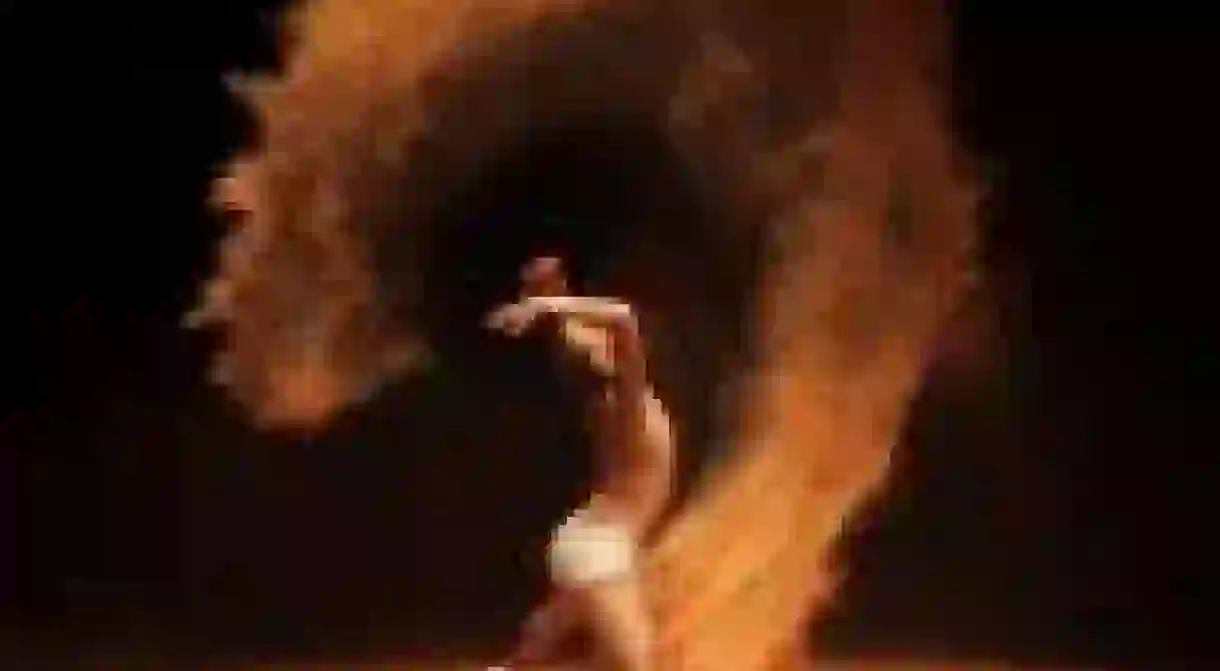The Best Places In Israel To See Contemporary Dance

Israel’s contemporary dance scene is thriving, offering modern interpretations of the Middle East’s artistic and historical riches. Israeli dance styles are varied and revolutionary, challenging traditional techniques and styles, and creating a unique point of view. Here, we take a closer look at some of the finest contemporary dance companies and dancers that Israel has to offer.

Batsheva Dance Company
Located in Tel Aviv, the Batsheva Dance Company was founded as a repertory company in 1964 by the Baroness Batsheva de Rothschild. The company has long been hailed as one of the world’s foremost contemporary dance companies, drawing dancers from both Israel and abroad. Artistic director Ohad Naharin’s dynamic and innovative leadership over the last 24 years has propelled the company into the forefront of contemporary dance. The company has gained notoriety throughout the dance world for its innovative movement language, Gaga, which was created by Naharin himself. Under Naharin’s tutelage, Batsheva Dance Company dancers go beyond the familiar and focus on the minutiae of body articulation and small gestures. The movement language demands that dancers feel the movements of their bodies, since the company rehearses and trains without the aid of studio mirrors. The aim is to create an economy and intimacy of movement, where both dancers and audience are ever-present in the movement as the dance unfolds.
6 Yechiely Street, Tel Aviv, Israel, 03-5171471

Kibbutz Contemporary Dance Company (KCDC)
Kibbutz Contemporary Dance Company (KCDC), was founded in 1973 and continues to flourish today under the leadership of artistic director, Rami Be’er. KCDC boasts one of the most unique backdrops in which the company’s dancers are able to train. Situated in Kibbutz Ga’aton in Israel’s Western Galilee, is the company’s International Dance Village. This beautiful location in Northern Israel affords artists the opportunity to wake up in the quiet beauty of nature, inspiring and informing their movements. The International Dance Village is home to over 60 Israeli and international dancers, as well as those involved in KCDC’s international dance programme, Dance Journey. KCDC’s dynamism pulls its audience in, breathing life even into the moments in which the dancers are still, cloaked in the blackness of the stage.
Kibbutz Ga’aton, Israel, 04 9859730
Vertigo Dance Company
Vertigo Dance Company was founded in 1992 by couple Noa Wertheim and Adi Sha’al, who serve as co-artistic directors. The couple created a contemporary company whose repertoire brings theatricality and unexpected dramatic elements to the stage. Vertigo is located in Jerusalem, surrounded by the historical and religious sites of the ancient city, as well as an abundance of incredible cultural and community activities. The company incorporates the stylistic integrity of the movement language developed by Noa Wertheim. The vocabulary blends dance techniques of classical ballet and release, with improvisation that incorporates Eastern martial arts, like Tai-Chi and Chi-Gong. In conjunction with Vertigo’s unique blend of techniques and styles, the company’s founders recently created the Vertigo Eco-Art Village, a centre for art and ecology that aims to combine Vertigo Dance Company’s tradition of art with social and community engagement.
Kamea Dance Company
Daniella Schapira and Tamir Ginz founded Kamea Dance Company in 2002 and offer captivating and inspiring works that weave stories through polished and dramatic movements. Tamir Ginz, who is both artistic director and resident choreographer for the company, has had extensive training both in Israel and abroad, and produces pieces with powerful movements, intense statements, and nuanced affectations of his personal inner life. His style entwines classic movements with the contemporary, and paints vivid scenes of the tones of human interaction and relations. Earlier this year Kamea Dance Company premiered its new work by Ginz, called Bamidbar Devarim, which translates to ‘Desert of Things’ and is inspired by the desert of Beer Sheva. Although Kamea is world renown, the company has special performances geared toward youth, in the hope of engaging a new generation of young artists and talent. Kamea also works alongside The L&L Goodman Bat-Dor Beer-Sheva Municipal Dance Center, which is the largest professional dance-training centre in Israel.
Kamea Dance Company, The Bat Dor Beer Sheva L & L Goodman Dance Center, Beer Sheva, Israel, 08623 1521
Kolben Dance Company
The Kolben Dance Company, founded in 1996 by Amir Kolben and located in Jerusalem, draws its inspiration for movement from the very city in which it dwells. Kolben serves as the artistic director and choreographer, imbibing his pieces with the movements reflective of life in Jerusalem and more broadly, of life in Israel. He combines elements of athleticism, theatricality, music, and digital animation. Kolben plays with movement in order to pay tribute to the intricacies and complications of life in the ancient city of Jerusalem. The physicality of his dancers drives the stories of the movements, making them that much more potent.
Central Gerard Baker Street, 11 Bezalel, Jerusalem, Israel, 02 6243365
Mayumana
Theater













